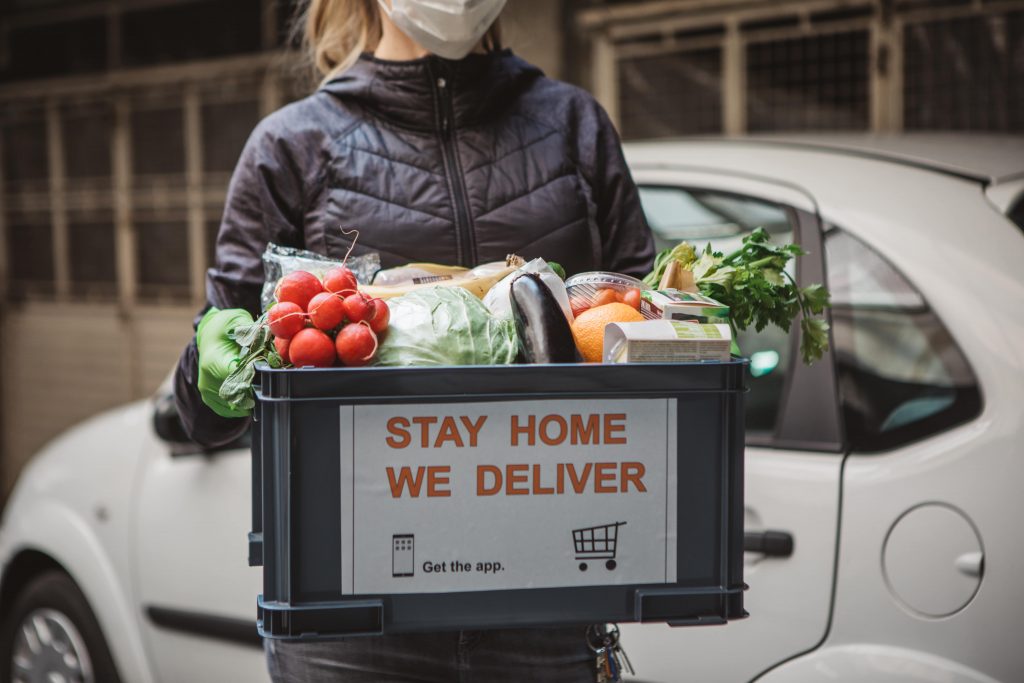
Guide to Small Business Survival During the COVID Shutdowns
Guide to Small Business Survival During the COVID ShutdownsBusiness as usual no longer exists. Now is the time to be strong and, at the same time, flexible.
Think of a tree facing strong winds – it has to have some give or else the tree will simply snap.
So, not sure if your business will be able to withstand the hurricane-force winds that the coronavirus is throwing your way?
Use this guide to give your business the flexibility it needs to survive the COVID-19 shutdowns.
The COVID-19 pandemic’s impact on the small business economy
There are several effects that the outbreak of coronavirus has had on the small business economy. First and foremost, there are the government-ordered shutdowns that haven’t just taken a bite out of revenues but have pushed many businesses past the point of no return.
Other businesses that haven’t been forced to dissolve are stuck struggling with massive disruptions in their supply chains, affecting their levels of production as well as distribution. Of course, not all industries are being impacted equally; some businesses have been hit harder than others.
Retailers
New data shows that retailers, for one, have seen the second-highest number of coronavirus-related job cuts over the first four months of 2020 – nearly 87,000 workers. The first place spot (as undesirable as it is) goes to the entertainment & leisure industry, which is composed of bars, restaurants, amusement parks, and hotels.
Restaurants
More specifically, virtually every U.S. restaurant has been forced to either close its doors entirely or limit its service to takeaway and delivery options only. The same data shows that the number of job cuts in the food industry in April 2020 (4,184) was nearly four times the number in April 2019 (1,093). Plus, in many states the public has been encouraged or even ordered to stay at home, cutting the number of restaurant customers down dramatically. Mix in the disruption in food supply chains and it becomes clear why so many restaurants are struggling to make ends meet.
Manufacturers
Manufacturing companies have also been hit hard. Social distancing regulations have forced many factories to close their doors or, at the very least, operate under very strict limits on the number of employees they can have in their facilities at any given time. In March 2020 alone nearly 5,000 workers in the manufacturing industry were cut as a result of the pandemic. Levels of supply and demand have both dropped due to the sheer number of clients and suppliers that facing hard times themselves.
There’s no doubt that this has been an extremely difficult time for lots of businesses. But at the same time, many have found opportunities to actually strengthen their organization during the coronavirus shutdowns. As the saying goes, it takes pressure to create diamonds!
Check out this industry breakdown of the coronavirus impact on the small business economy.
Are you curious about how businesses are managing to succeed during the coronavirus shutdowns? Keep reading…

4 ways for SMBs to succeed during the shutdowns
When it comes to the number of ways your business can succeed during coronavirus shutdowns, the only limit is your imagination and creativity. Don’t be afraid to try something completely different – right now could very well be the beginning of a new chapter in your business!
1. Go online
Maybe the best way to have your business succeed during the coronavirus crisis is to start shifting operations online. If customers can’t visit your place of business in person, that shouldn’t stop them from purchasing your services or products. Creating an online store will give your customers the ability to pay for your business digitally, thus opening up new revenue streams that can help your business grow while other businesses struggle.
Don’t worry, you won’t need to take night classes at your community college to launch your business’s online store. With Become Online you can get matched with the specific tools and services you’ll need to take your business online in a short time and with no stress. Plus, through Become, you can get special access to discount codes to help save on the cost of your online store.
2. Diversify your services/products
The coronavirus pandemic has resulted in the designation of certain businesses as “essential” and other businesses as “non-essential”. Unfortunately, that’s a government-imposed classification, not a consumer-based one. The bottom line is that if you want your business to remain relevant in light of this new set of priorities, you’ll need to refocus your efforts on products or services that are more directly related to the crisis.
That might be easier said than done but it’s definitely possible. To reiterate, your business’s only limit is your imagination.
Some examples of businesses diversifying their services or products include:
- Many clothing companies have shifted to the production of protective face masks
- Alcohol distilleries and beer breweries are shifting their focus to distilling hand sanitizer for their communities
- Restaurants like Panera Bread providing grocery-ordering services for customers
Listen to what the public is in need of and think outside the box to see where there are gaps that your business can fill.
3. Use gift cards
For many businesses, the reality is that they won’t be able to offer their services again until the economy reopens and the restrictions on face-to-face interactions are lifted. While that’s definitely not a good thing for those businesses, it does result in a huge build-up of demand. Offering gift cards during shutdowns will give customers a way to ensure their demand will be met when the crisis ends.
Use Kabbage’s Help Small Business Gift Certificate Program to get started today for free.
On one hand, a gift card will give customers a voucher for your services. On the other hand, they’ll also be supporting you through this time so your business will actually be there to provide its services when things finally calm down.
4. Partner-up with local businesses
There’s strength in numbers. That’s even truer during the coronavirus pandemic. Why face obstacles alone when you can join forces with other local businesses? Again, this is an idea that will take some creativity on your part. But the payoff can be great for all parties involved.
Take, for example, the story of Metro Bis – a restaurant in Connecticut. While their dine-in services have been restricted, they’ve taken a clever route to keep the business’s cash flowing. They’ve teamed up with a local grocery store, Fitzgerald’s Foods, to offer prepared meals for pickup. This allows Metro Bis to keep serving its customers and simultaneously brings business to the local grocery store, strengthening both businesses and keeping customers satisfied.
You can join online groups for business owners in your area to see what your potential options are. If you’re not aware of any online groups for local businesses, you can start by joining the Become Business Owner Community. There you can share questions, answers, ideas, and perspectives with people who are facing similar challenges as you.
Now that you have a few creative ways for your business to keep afloat during the shutdowns, you’ll want to get prepared to get back to business when reopenings start.

5 tips for getting back to business
Facing the storm is just the beginning of your business’s journey through the coronavirus pandemic. Preparing to repair after the clouds clear is going to be just as important (and maybe even a bit more).
Get ready to return to business with these five tips:
1. Implement safety guidelines
When you reopen your business, be sure to prioritize the health and well-being of your staff and your customers. Educate employees on how to comply with health safety protocols. Place sanitization stations around the business for everyone to use. Enforce social distancing within the workplace. Regardless of where you’re located or what industry you’re in, this is an essential part of preparing your business to safely reopen after shutdowns.
2. Review & adjust your business model
It’s uncertain whether the economy will ever return to its pre-coronavirus status. In fact, a recent survey found that 72% of businesses expect to see permanent changes to the way they operate as a direct result of the pandemic. At a certain point, fighting against economic changes will be a fruitless endeavor. More likely than not, your business will need to assimilate and learn how to deal with the changes.
When revising your business model, consider adjusting one or more of these three factors:
1. What are you selling?
2. Who are you aiming to sell to?
3. How will you provide your products & services?
3. Carefully cut costs
You’ll want your business to be poised for a strong comeback when economic conditions begin returning to normal. That’s why you need to be cautious about cutting business expenses while the crisis goes on.
Right now it might seem like a good idea to let go of employees, shut down locations, reduce working hours, and so on. While those decisions can help save your business money and survive this difficult time, you’ll need to have a plan in place to reverse those changes at the appropriate moment. Otherwise, you may find your business struggling even after coronavirus restrictions are lifted.
4. Bring customers back
How can you draw customers back into your business when stay-at-home orders expire? There are plenty of ways!
First of all, you should definitely think about choosing a different pricing strategy to keep your customers happy but also remain competitive in your industry.
Secondly, you can bring in more customers by diversifying your marketing strategy. Consider investing some effort into developing a new and improved social media marketing strategy, since roughly one-in-three (32%) Americans say they’re spending more time on social media during the coronavirus outbreak.
A third idea that’s pretty easy to put into action is to give customers the option to schedule appointments right now so they’ll automatically be in line for when the shutdowns end. Yes, you might need to push that schedule if shutdowns are extended, but it will show your customers that you’re intent on reopening and providing your service or products as soon as you can.
5. Get help from the local community
In their efforts to make it through this crisis, many business owners have been focused on the Paycheck Protection Program as well as the Economic Injury Disaster Loan program (compare them here). But those federal relief programs are far from being the only options available for struggling businesses.
Learn what to do if you’re rejected for a PPP loan.
States, local communities, and private organizations have also started their own initiatives to help small businesses in need of help during this crisis. Whether it’s a business loans program, a grant program, or a community group that helps businesses lend support to one another – you should investigate what your local community is doing to keep businesses alive through the pandemic.
Note: As valuable an effort it is to apply for PPP loans or EIDLs, it’s also important to avoid getting tunnel-vision. Maintain a wider perspective and make full use of all financial aid solutions available to your business.
Stayin’ alive
You don’t need to have a degree in business strategy to ensure that your business survives the COVID-19 shutdowns. What you do need is confidence, perseverance, and a healthy share of creativity. And don’t forget that the steps another business takes to survive might not work the same for you. Be flexible and, most importantly, don’t give up hope!
